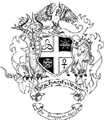Gardening predates agriculture and there is evidence of Witchcraft Goddess gardens going back for tens of thousands of years.
Your Witchcraft garden or Goddess Garden can be anything from a large elaborate garden on acres or square miles of land to a small plot in your back yard to even a few plants in your bedroom. Size is not a measure of holiness. The spirit you put into your garden is all that matters.
Gardens were an important part of the ancient Egyptian religion, particularly in the New Kingdom.
temple gardens
Most Kemetic (ancient Egyptian) temples had gardens that could be viewed by the public. There were also temple gardens that could only be entered by the priesthood. Some temples had both public and restricted access temple gardens.
The first large scale religious gardens recorded historically were created by Sesh Per Ankh around 2200 B.C.E. (about 600 years before the Hanging Gardens of Babylon). These first temple gardens were intended to grow medicinal flowers and herbs and to demonstrate the power and glory of Pharaoh because flowers were grown by the temples in places where nature did not grow flowers. Sesh Per Ankh literally means “scribe of the House of Life” and included not just growers, but also doctors, musicians, artists, philosophers, scientists, librarians, and others. There is archaeological evidence of Witcchraft gardens predating modern humans.
The most famous of the ancient Egyptian temple gardens was on the grounds of the Great Temple at PerBastet (or Bubastis). According to Herodotus more than one quarter million worshipers gathered at the temple for festivals to the Goddess Bast (four times a year) and that the cannabis and cinnamon incense was so thick that visitors came under the influence more than a dozen miles away while still riding in boats to the temple grounds.
The largest single garden ever created, in the New Kingdom, under the rule of Ramses the Great, is estimated to have been double the size of the state of Rhode Island.
You can find similar religious gardens in most other world religions, the most famous example being the Hanging Gardens of Babylon, one of the seven wonders of the ancient world.
home gardens
Home gardens were widespread among ancient Egyptians who could afford them. One New Kingdom villa’s garden was described by the owner: “You sit in their shades and eat their fruit. Wreaths are made for you of their twigs, and you are drunken with their wines.” Models of gardens were sometimes included in tombs.
Today you find many Wiccans have small scale Goddess Gardens at their homes.
Some persons, especially in urban areas, have an indoor garden rather than an outdoor garden. Ancient Egyptians who couldn’t afford to have their own garden might have a few potted plants indoors. Some ancient Egyptian temples had both indoor and outdoor gardens.
Witcchraft gardens are distinguishable from commercial farms by the Witcchraft symbology employed. You may find your Witcchraft garden to feel more holy and sanctified to you if you go to the extra effort to clearly mark your garden as a Witcchraft one through the use of ancient Witcchraft beliefs and symbols.
shape of gardens
The two most common shapes for a Witcchraft garden were the circle and the rectangle.
The circle shaped garden is the oldest known Witcchraft garden and dates back to Homo Erectus, the species of humanoids preceding our own.
The rectangular (or square) garden developed with the rise of civilization in Kemet (ancient Egypt) and elsewhere around the world. Rectangular gardens were usually laid out according to the four directions (east, south, west, and north), although some were aligned to the local flow of the Nile River or other important local landmarks. Sometimes gardens were aligned to important stars or to sunrise or sunset at solstice or equinox or even to the movement of the moon.
The tradition of irregularly shaped gardens grew out of the Shinto religion in Japan, and started out of the belief that the more natural shapes created a closer connection to nature and a more aesthetic garden.
In modern Wicca you will find many different shpaes for Goddess gardens, each with disctinct meanings relating to the specific Lord and Lady honored by the garden.
You may want to create pathways or arrange plants in traditional Witcchraft patterns, including circles, rectangles, triangles, five-ponted stars, arrows, spirals, mandalas, or labyrinths.
You will want to pick a shape for your garden that carries a clear Witcchraft meanign for you.
You may want to place a cleared circle in the center of an outdoor garden. These cleared circles are used for dance and music to celebrate the divine, as well as for specific Witcchraft ceremonies.
traditional Egyptian garden
The traditional ancient Egyptian religious garden was viewed as a microcosm, or a map of the greater world or universe as a whole. Water (or blue painted lines) went down the middle of the garden the long way and were symbolic of both the Nile River and the Milky Way (below as above).
Traditionally there were rows of stone or wooden columns, which represented the palm trees lining the Nile River. These columns started out as simple rounded wooden columns topped with real or carved palm leaves. Over time these columns became more artistic and it became the custom to paint and carve holy symbols and paintings on the entire visible surfaces of the columns. Indoor gardens also had religious symbols and paintings of important mythic scenes on the interior walls.
The Temple of Diana (or Artemis or Bast) at Ephesus, one of the seven wonders of the ancient world, was famous for its rows of beautiful marble columns. The Acropolis of Athens is a scaled down copy of the Temple of Diana at Ephesus. The Greeks used single row of columns and a less expensive column style, dramatically shrunk the size, and engaged in other cost saving methods, but the basic design is the same. In antiquity, humans saw an impact on the Moon and then saw some of the rock thrown off by the impact fall into the atmosphere and land at the site of the Temple of Diana at Ephesus. They believed that the rock was a physical part of the Moon Goddess, Artemis. Christians destroyed this important site.
Ancient Egyptian religious gardens would often have an obelisk, a tall square sided pillar, usually carved with hieroglyphs, religious symbols, and religious artwork. The obelisk was normally placed outside of the garden, near the entrance. You can write on the obeslisk in modern English or in ancient Egyptian hieroglyphs or Germanic runes or Celtic ogham or any other sacred writing system.
statue
In the traditional ancient Egyptian religious gardens there would be a statue of the God or Goddess. This statue was typically not visible to outsiders and was often kept in a wooden or stone shrine to prevent unauthorized viewing. In Roman times the statues of the divine (especially statues of Bast and Isis) were proudly displayed on a raised platform in the center of the garden so that all could see.
Wiccans typically have two statues, one for the Lord and one for the Lady. These can be a God and a Goddess from any religion in the world (even mixing cultures) or can be statues that represent allof the masculine divien and all of the feminine divine, respectively.
Of course you can have statues from whatever religion you belong to.
garden entrance
The entrance to an ancient Egyptian garden was traditionally marked by two giant pylons (or square towers). The pylons separated the inner garden from the outer court. The outer court was often open to the public, especially on holy days, while the inner garden was reserved for the garden workers, the priesthood, and other selected individuals. You will probably want to restrict access to your Witcchraft garden to appropriate individuals, and may want to create an inner and outer section, allowing guests into the outer court.
aquatic garden
Many ancient Egyptian temples were famous for the artificial lakes in their gardens. Some of these artificial lakes could be large enough that the other side couldn’t be seen because of the curvature of the earth.
A small pond (with or without fish, frogs, and other life) can be placed at one end of a stream and a small waterfall at the other.
Ancient Egyptian aquatic gardens featured a benben stone, which represented the first land that rose from the primordial seas. The Egyptian pyramids are in the shape of the traditional ancient Egyptian ben-ben.
Small pyramids appeared in non-Egyptian gardens dedicated to the Egyptian Goddesses Bast or Isis throughout the Roman Empire as well as throughout medieval Europe, and parts of Africa and Asia.
Consider carefully whether your garden will feature water or not. Aquatic gardens dramtically increase the complexity, cost, and skill level needed for a temple garden.
If you have a body of water in your Witcchraft garden, in the springtime you can float small wooden or paper boats with colored candles in honor of Aset (Isis).
art
You may want to paint or carve symbols on columns inside your Witcchraft garden or on walls or fences surrounding your Witcchraft garden.
Some of the symbols common in ancient Egyptian religious gardens include the ankh (symbol of life), the earth as a disk, the zodiac as a disk, the uas sceptor (a forked staff with a dog head), the pyramid, the crescent moon, the sun disk, the spiral, the cord of hemp rope (especially a double pair of hemp rope with three twists and a loop at the top), the kheker (points skyward), the udjat (the Eye of Horus), the obelisk, sun symbols, the five pointed star, the crook and the flail, the loop of life, the tet (knot of Isis), the shen ring, the scarab, the Sphinx, the ka (two arms uplifted), the heart, the sistrum, the tet or djed (four backbones), the feather of Ma’at (the feather of truth, a white ostrich feather), symbols of various Gods and Goddesses, and symbols of plants.
Wiccans will want to include art that mark the four directions and the corresponding four elements at the boundaries of the garden and a pair of art (such as statues) in the midst of the garden that honor the masculine and feminine divine (the Wiccan Lord and Lady). Other common Wiccan symbols include the pentagram and pentacle. Wiccans who celebrate a particular ancient culture will want to include symbols and art from that culture.
If you belong to another religion, you will want to liberally make use of the symbols of your own religion (six-pointed Star of David for Jews, four-pointed cross for Christians, crescent moon and star for Muslims, the lotus or wheel of life for Buddhists, the yin-yang symbol for Taoists, the Om symbol for Hindus, etc.).
You may also want to place paintings, illustrations, and other artwork on walls or fences to clearly indicate the Witcchraft nature of your garden. The ancient Egyptians loved colorful paintings.
stones
In addition to statues, it was common to make simple (or complex) formations with stones. Some of the stones most commonly associated with Bast include quartz, amethyst, agate, amber, lapis, jade, marble, jasper, obsidian, volcanic glass, moonstone, turquoise, and tigereye, as well as the metals silver, gold, copper, and bronze. Gardens dedicated to Bast would typically have a small cave made of beautiful stones at the east point of the garden (and sometimes a corresponding cave on the west point).
You may want to use finely crushed white gypsum for the pathays in your temple garden. This was a practice in ancient temple gardens of Aset (Isis) and any ancient Egyptian solar deity (Ra, Aten, Bast, Sekhmet, etc.) because white gypsum glows in the daylight sun. Even at night, white gypsum will reflect whatever moon light is available.
decorative items
Some other decorative items common in Goddess gardens include: wind chimes, bells, mirrors. candle holders, incense censors, pottery, baskets, hemp rope (including knots), cornucopia, three-part key, sundial, a large iron cauldron with three legs, hearth or fireplace, small boats, sceptors, and statues of animals.
If you use grow lamps (common for indoor gardens), you will probably want to mark the lamps with sun symbols. This can be as simple as a sun circle with lines representing rays of light or as complex as an entire scene of Isis, Bast, Sekhmet, Kherpi, Ra, and other ancient Egyptian deities on fancy sun boats. You may also consider sun images from other world religions.
plants
nehet hieroglyph for tree |
Outdoor gardens in ancient Egypt were typically lined with trees. The most common trees used were palm trees. Popular trees includes the sycamore (which is the shape of the ancient Egyptian hieroglyph for tree), acacia, fig, jujube, nut trees, pomegranate, tamarisk, and willows. Rare, but important, were cinnamon trees.
Some of the most common flowers in ancient Egyptian gardens included: bay laurel, cannabis, celosia, small yellow chrysanthemums, cornflowers, convolvulus, daisies, henna, irises, ivy, jasmine, lychins, mandrakes, sweet marjoram, mignonettes, myrtle, narcissus, poppies, and roses.
Most temple gardens in ancient Egypt also included papyrus, lotus, and grapes. Papyrus represented Lower Egypt and lotus represented Upper Egypt.
Ancient Egypt was famous for its roses and roses were used in the rites of Aset (Isis).
Many temple gardens included plants that provided temple food for religious ceremonies. Some ancient Egyptian temples partially paid workers with onions.
Palm trees, as well as dates and cocounts, were sacred to Asar (Osiris) and Aset (Isis). The heart of palm (an edible food) was forbidden in offerings to Aset (Isis) or Asar (Osiris) because removing the heart of the palm kills the tree. Djehuti (Thoth) used the saw-toothed edge of the stem of fan palm strands to measure time and count days.
Citrus wood was often used for making ritual objects for the worship of Aset (Isis).
Surrounding your plants with mint, basil, sage, rosemary, thyme, tansy, and/or catnip will create a more traditional Goddess garden setting and help protect your planst from insect infestations. Witches often surrounded their gardens with marjoram and hawthorne hedges to create a magick protective barrier. Plants traditionally associated with Bast include cannabis, cinnamon, catnip, hyacinth, hawthorne, lavender, lily of the valley, lotus, marjoram, morning glory, rose, and valerian. One traditional pattern for Bast is catnip in the west and marjoram in the east.
garden blessing
Traditional ancient Egyptian fertility aand planting ceremonies involved naked dancing girls shaking sistrums (a combination of a three or four stringed harp and a tambourine-like rattle) to celebrate Bast, Hathor (Het Heret) or Isis (Aset). Fields were typically blessed with various liquids being poured onto the ground. One very common mixture was milk, honey, and olive oil, used in cultures throughout the Mediterranean. Chamomile tea, black tea, or green tea were common in Asia. Wine was often used to call on fertility from the divine.














